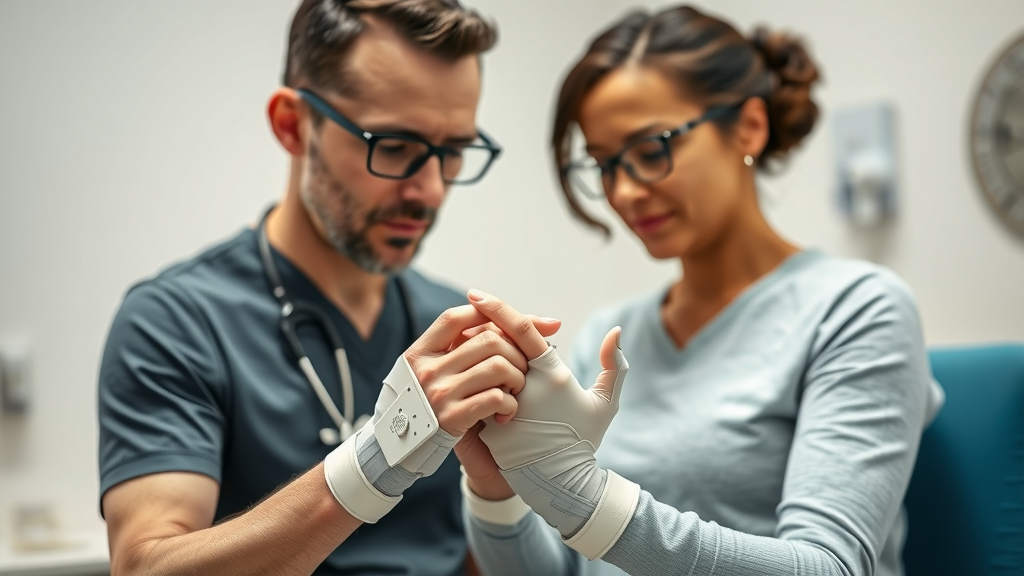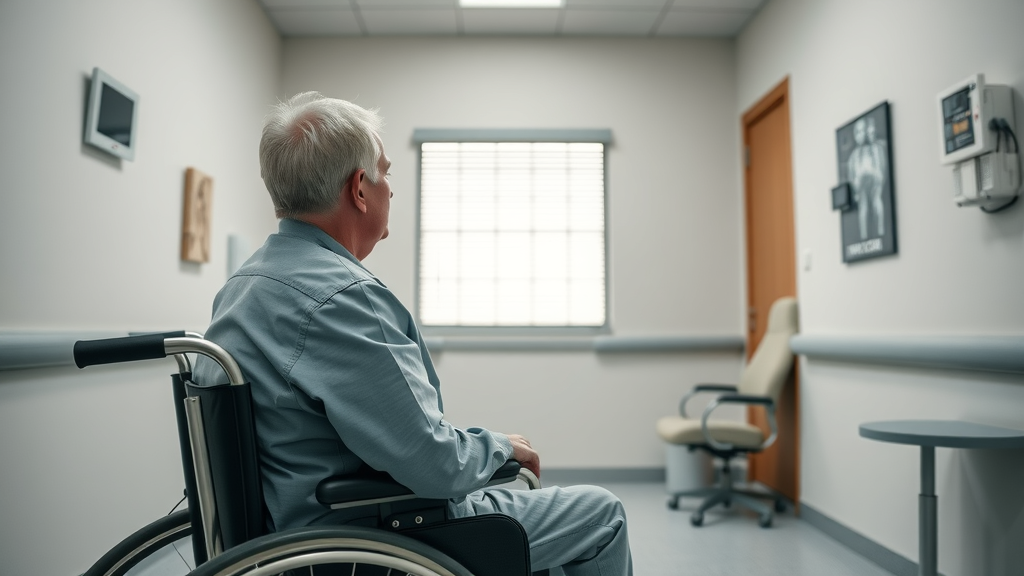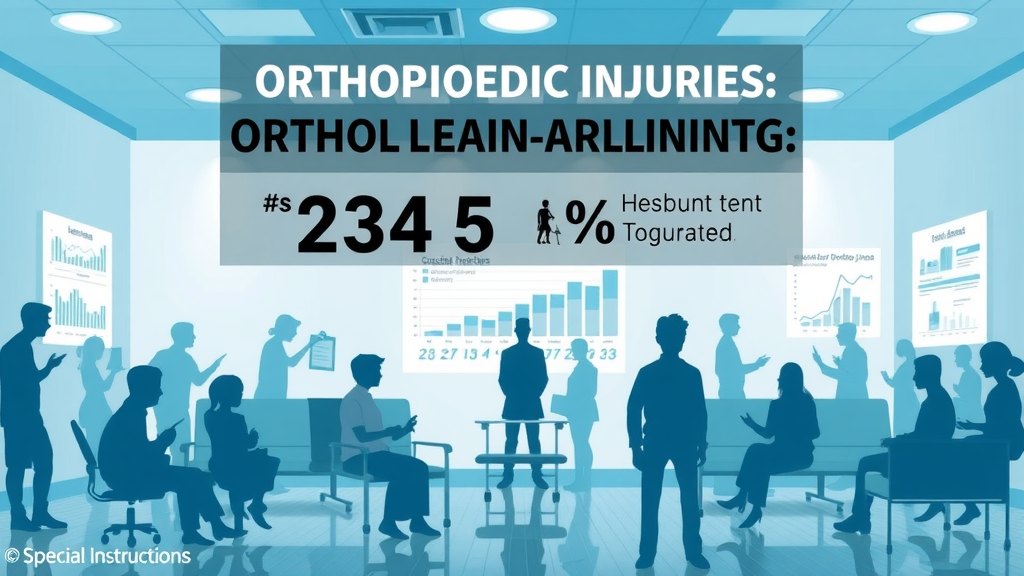Opening Hook: Are You Maximizing the Benefits of In-Office Orthopedic Services?
Have you ever wondered if you’re truly getting the most from your orthopedic appointments? In today’s fast-paced medical world, in-office orthopedic services FAQ answers are more important than ever. Understanding what these services entail—from imaging to therapy and minor procedures—can empower you to make better healthcare decisions. This guide dives deep into the scope and benefits of comprehensive in-office orthopedic care, helping you navigate your treatment options quickly and efficiently.

What You'll Learn in This In-Office Orthopedic Services FAQ Guide
This detailed FAQ guide about in-office orthopedic services provides clarity on key facets such as diagnostic imaging, hand therapy, minimally invasive procedures, and insurance benefits. Whether you’re preparing for your first appointment or seeking advanced care options, this guide explains how orthopedic doctors and surgeons work together in an office setting to deliver compassionate, individualized care. Additionally, you’ll learn about common patient questions and expert recommendations to optimize your orthopedic health journey.
Overview of In-Office Orthopedic Services FAQ
Defining In-Office Orthopedic Services and Their Importance
In-office orthopedic services refer to orthopedic care that is provided directly within the physician’s or surgeon’s clinic rather than a hospital setting. This includes diagnostic imaging such as X-rays and ultrasounds, conservative treatment options, hand therapy, applications of orthopedic devices like casts and braces, and even some minor surgical procedures. The importance of in-office services lies in their convenience, speedy access, and the personalized attention patients receive from their orthopedic team. These services aim to deliver comprehensive, immediate care under one roof, which often leads to faster diagnosis and treatment, better patient outcomes, and reduced healthcare costs.

Role of Orthopedic Doctors and Orthopaedic Surgeons in In-Office Care
Orthopedic doctors and surgeons play a pivotal role in providing meticulous, patient-centered care during in-office visits. These professionals perform thorough evaluations, ordering and interpreting imaging, initiating conservative therapies, and recommending minimally invasive procedures when necessary. Collaboration with skilled physician assistants and hand therapists within the office ensures continuous support with rehabilitation and device application. According to Timothy Larson, of Denton Hand & Orthopedics , "Our team is dedicated to comprehensive in-office care designed to improve mobility and alleviate pain promptly." This integrated approach highlights the significance of in-office orthopedic services FAQ as a resource to answer patient inquiries about what to expect and how to prepare.
Comprehensive Care Provided by Orthopedic Doctors in Office Settings
Compassionate and Individualized Patient Care
Orthopedic care is not just about fixing bones and joints; it’s about compassionate, individualized care that addresses each patient’s unique anatomy and lifestyle. Dr. Larson emphasizes, "Providing compassionate and individualized care is the cornerstone of our in-office orthopedic services, ensuring each patient receives tailored treatment plans." This means that every plan is personalized based on factors like injury severity, patient age, activity level, and recovery goals. Such dedicated attention ensures optimal outcomes and patient satisfaction, reflecting the vital role the in-office setting plays in nurturing close patient-provider relationships.
Conservative Treatment Approaches and Their Benefits
Whenever feasible, conservative treatment is the first line of management in in-office orthopedic services . This includes non-invasive methods like physical therapy, bracing, activity modification, and pain management without immediate surgery. The benefits of conservative treatments include reduced risk, cost savings, and often effective symptom relief. Importantly, in-office orthopedic teams monitor progress regularly and adjust treatments as necessary, optimizing recovery time. Conservative care serves as a foundation that prioritizes patient safety and seeks to avoid unnecessary surgical intervention.
In-Office Imaging: XR and Ultrasound for Quick Diagnosis
Timely and accurate diagnosis is critical in orthopedic care, and having imaging tools such as X-ray (XR) and ultrasound directly available in-office accelerates this process. Orthopedic specialists can promptly evaluate bone fractures, joint degeneration, and soft tissue injuries without delay. This immediate access to diagnostic imaging allows for quicker adjustments to treatment plans. As Dr. Larson notes, “In-office imaging technology enables us to quickly identify problems and start treatment right away, enhancing patient convenience and outcomes.”

Orthopedic Surgeons and Physician Assistants: Collaborative Care in Orthopaedic Surgery
In-Office Hand Therapy and Orthopedic Device Application
Post-diagnosis, effective rehabilitation and support are essential components of orthopedic recovery. In-office hand therapy provides specialized guidance and exercises designed to regain mobility, strength, and function. Additionally, expert application of orthopedic devices such as casts, braces, and splints plays a major role in securing injured areas for optimal healing. The synergy between orthopedic surgeons, physician assistants, and therapists enables patients to receive holistic care without the need for multiple external referrals.

Minimally Invasive Procedures and Their Advantages
Many minor surgical interventions can now be performed via minimally invasive methods, often carried out at nearby centers but initiated and coordinated by the in-office orthopedic team. These procedures typically involve smaller incisions, reduced pain, and faster recovery timelines. Dr. Larson explains, "Performing minimally invasive surgical procedures in nearby centers allows us to reduce patient recovery time and improve outcomes significantly." The in-office setting serves as a hub for consultations, follow-ups, and therapy related to these surgeries, enhancing continuity of care and patient comfort.
Contracted Insurance Services to Save Time and Money
Navigating insurance can be a headache for many patients, but orthopedic offices often maintain contracts with numerous insurance providers. This arrangement helps to perform many minor procedures directly in-office, significantly cutting out costly hospital stays and lengthy approval procedures. Patients benefit from lower co-pays, reduced out-of-pocket expenses, and quicker treatment. Orthopedic specialists also assist patients in understanding coverage options, facilitating a smoother healthcare experience.

Frequently Asked Questions About In-Office Orthopedic Services FAQ
What to Expect at an Orthopedic Appointment?
During your first orthopedic office appointment, expect a thorough evaluation including medical history review, physical exam, and possibly immediate diagnostic imaging depending on your symptoms. The doctors prioritize listening to your concerns and tailoring a management plan accordingly. Patient education is emphasized, so you’ll leave informed about your condition and next steps. Our in-office orthopedic services FAQ confirms that appointments are patient-focused and designed to help start recovery promptly.

Is Orthopedic Care Considered Outpatient?
Most orthopedic office visits and minor procedures are indeed outpatient services, meaning they don’t require overnight hospital stays. This outpatient model enhances convenience and comfort while reducing healthcare costs. Our orthopedic services FAQ guides patients through which procedures are safely managed outpatient and which may require hospital admission.
What Are the Three True Orthopedic Emergencies?
Knowing emergencies helps ensure immediate care. The three true orthopedic emergencies commonly identified are:
- Open fractures (broken bones exposed through the skin)
- Compartment syndrome (dangerous pressure buildup in muscles)
- Severe joint dislocations with nerve or vascular compromise
What Is the Hardest Orthopedic Surgery to Recover From?
Complex surgeries like total knee or hip replacements and spinal fusion procedures generally require the most extensive recovery periods. Recovery includes pain management, physical therapy, and careful activity modification. Our orthopedic services FAQ stresses that each patient’s journey varies and that minimally invasive options may provide shorter recovery times for some cases.
Common Misconceptions and Key Takeaways in Orthopedic Care
Debunking Myths About In-Office Orthopedic Procedures
Many patients mistakenly believe that quality orthopedic care requires hospital stays, or that surgery is the first treatment step. In reality, as this in-office orthopedic services FAQ reveals, offices handle sophisticated imaging, therapy, and minor procedures effectively in-house. Conservative treatment often precedes surgery, underscoring the comprehensive capabilities of orthopedic offices.
Key Takeaways for Patients Considering Orthopedic Services
Understanding these essential points enhances patient confidence:
- In-office orthopedic services provide rapid diagnosis and treatment focused on patient comfort.
- Conservative care and minimally invasive techniques prioritize your safety and recovery.
- Contracted insurance services improve affordability and reduce administrative delays.
| Aspect | In-Office Orthopedic Services | Hospital-Based Care |
|---|---|---|
| Accessibility | Immediate, convenient appointments | Longer wait times, scheduling complexity |
| Imaging & Diagnostics | On-site X-ray and ultrasound | Advanced imaging but scheduled separately |
| Procedures | Minor procedures + referral for surgeries | Full surgical suite for complex cases |
| Recovery | Minimally invasive surgeries with outpatient rehab | Extended inpatient recovery possible |
| Cost | Lower out-of-pocket and co-pays | Higher hospital facility fees |
Conclusion: Empowering Patients with Knowledge on In-Office Orthopedic Services FAQ
Summary of Benefits and Expert Recommendations
In summary, in-office orthopedic services FAQ guides patients through the essentials of rapid, compassionate orthopedic care that is effective and economically sensible. Patients benefit from conservative treatment approaches, immediate imaging, expert hand therapy, and minimally invasive surgeries facilitated by trusted orthopedic professionals such as Dr. Timothy Larson of Denton Hand & Orthopedics. Dr. Larson emphasizes, Understanding your options with in-office orthopedic services can lead to faster, more personalized care and better overall outcomes.
Empower yourself by engaging with these FAQs and prepare to optimize your orthopedic health journey.
Ready to Feel Better? Schedule Your Consultation Today.
- Visit www.dentonhand.com to book your appointment
- Access expert orthopedic care with minimal wait times
- Benefit from comprehensive in-office services tailored to your needs
 Add Row
Add Row  Add
Add 




Write A Comment